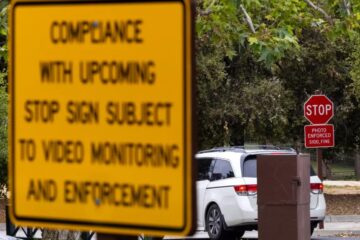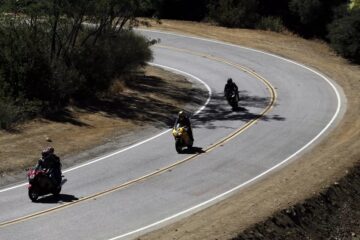Local freshwater swimming holes not so fresh after all
Heal the Bay report finds high fecal indicators
Source of this article: The Thousand Oaks Acorn, July 9, 2015
At Heal the Bay, we care about water quality and public health. Our Beach Report Card has been helping beachgoers and swimmers make informed decisions for many years about where to go with friends and family for a safe day at the beach.
But what about freshwater outings?
That was the question we hoped to answer last summer in a pilot project to assess usage and water quality of popular freshwater swimming holes in the Santa Monica Mountains.
We chose to study the following: Rock Pool in Malibu Creek State Park, Las Virgenes Creek at the first bridge crossing in Malibu Creek State Park and Solstice Canyon waterfall on National Park Service land.
A team of staff, interns and volunteers visited each site about twice a week from the end of June through September. Every time, they recorded the number of visitors and swimmers as well as their demographics to identify communities possibly at risk and to help guide any future outreach.
We also collected data, including air and water temperature, amount of trash, presence of animals in the water, and water clarity, color and smell, and water samples, which were tested in our laboratory for E. coli and enterococcus, two kinds of fecal indicator bacteria.
Those bacteria are not necessarily harmful but they indicate the possible presence of diseasecausing microorganisms. Water contaminated with these microorganisms can lead to illnesses such as gastroenteritis and upper respiratory infections as well as more serious diseases.
Bacteria and other microorganisms can come from human waste such as leaky or malfunctioning septic tanks and sewage leaks, as well as animal waste from dogs, horses and birds that enter the water directly or through runoff.
After several months of data analysis and number crunching, we’re able to reveal some key findings.
We found high levels of fecal indictor bacteria, particularly in Las Virgenes Creek and at the Rock Pool.
At Las Virgenes Creek, 61 percent of the samples were over the limit for enterococcus, while 28 percent were over the limit for E. coli. At Rock Pool, 22 percent were over the limit for enterococcus, while 11 percent were over the limit for E. coli.
At Solstice Canyon, 10 percent of the samples were over the limit for enterococcus, while none of them were over the limit for E. coli.
In conclusion, we found that there are likely public health risks at popular swimming spots in the Santa Monica Mountains, particularly in Malibu Creek State Park.
The community most at risk is the Hispanic community, particularly families at Las Virgenes Creek. There is a need for signage, education and outreach so that visitors can be informed that there is a potential health risk if they swim in Las Virgenes Creek and Rock Pool.
We plan to meet with staff from the L.A. County Department of Public Health, California State Parks and the National Park Service to discuss our results and advocate for public health protection.
We hope to continue monitoring water quality this summer to determine whether the trends stay consistent.
Our full report also includes information on how to get involved with the Stream Team volunteer corps.
On a personal level, I was struck by the interest and excitement of the public in what we were doing. Visitors wanted to know if the water was safe to swim in.
I had one memorable conversation with a man from North Hollywood who was visiting Rock Pool for the first time. He was there with his family, including a young daughter. He watched us carefully for a bit then asked what we were doing.
He said that when they arrived at the swimming hole that morning, his daughter asked him who makes sure the water is safe and OK to swim in. He didn’t know the answer, so when he saw us there he was happy that someone was testing the water and thanked us profusely.
While the results from the pilot are indeed concerning, we’re reluctant to completely discourage people from swimming at the three sampling sites. Rather, we advocate using caution and common sense if you choose to take a dip at a local swimming hole:
- Don’t swallow any water.
- Avoid swimming if you have any cuts or sores.
- After taking a dip, be sure to shower with soap.
And, of course, there are always the beaches.
Check Heal the Bay’s Beach Report Card at http://bit. ly/1H1AB1j for the latest water quality grades at your favorite beach, and we’ll continue our work on improving water quality across the Santa Monica Bay—in both fresh and ocean water.
Katherine Pease is responsible for Heal the Bay’s water quality and biological health assessment efforts in the Malibu Creek Watershed.




0 Comments